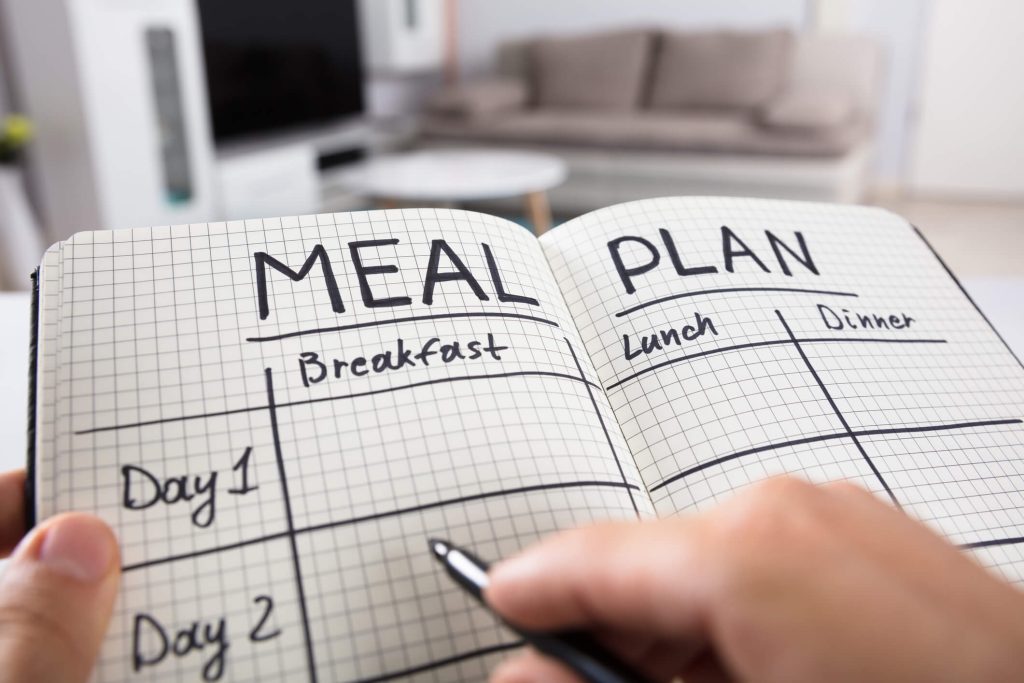
What Is Diet Cycling?


What Is Diet Cycling?
Why Is Diet Cycling Beneficial?
Nature Is Cyclical
Everything in nature functions in cycles that repeat over and over again. Alternating days and nights, circadian rhythms, seasons, inhalation and exhalation, and the food chain are all examples of cycles.
Therefore, diet cycling or switching nutritional strategies are rather natural.
Avoiding Homeostasis Or Adaptation That Prevents Progress

Homeostasis is one of the principles of life. It is how your body adapts to the environment to keep internal physiology stable, even when environmental stimuli change.
Your body tends to be as homeostatic as possible so no drastic changes can affect it negatively. So, when you go into a caloric deficit to lose weight, your body can adapt to burn less calories in order to avoid deaths from starvation.
As a result of such a mechanism, caloric deficits can cause weight loss initially before the results plateau. This is because your body will adapt to your new diet, reaching a new homeostasis.
Conversely, increased caloric intake will not necessarily lead to weight or desired muscle gain, but rather to burning more calories and reducing your appetite. Some people will fidget more and have more energy in the gym as a way to burn the extra calories.
Diet cycling helps to avoid these counteracting processes. You can mitigate your anti-starvation and calorie set point responses.
Maximizing Your Results In The Long Term
Whether you are targeting weight loss or gain, cycling your diet may take you more time to achieve your goals, but it can help you maximize the results long term.
A study investigated whether calorie cycling results in more fat mass loss compared to a 16-week-straight caloric deficit. 36 obese men participated. 19 of them did a caloric deficit diet, while 17 of them alternated between two weeks of caloric deficit and two weeks of energy balance diet, overall taking 32 weeks. Men who cycled their diet lost more weight and fat mass (14 and 12kg, respectively), than those who did continuous caloric deficit (9 and 8kg, respectively).
Another study focused on the beneficial effect of diet cycling on resting energy expenditure (REE). REE is the baseline calories you burn doing nothing.

A total of 36 obese women participated, and they were subject to cycling between moderate calorie restriction and higher caloric intake. The groups were high-carb and high-protein diets. The cycling included 1 week of 1200kcals per day, 3 weeks of 1500kcals per day, and 4 weeks of 2200kcals per day of caloric maintenance, after which the 4-week caloric deficit repeated.
Participants lost significant amounts of weight (5 – 10 lbs) and fat mass 4 – 7lbs), while their REE had minimal reductions (about 50kcals per day).
There are many benefits associated with diet cycling:
- Improved exercise performance. Caloric deficit days may reduce glycogen stores in muscles, and caloric surplus or high-carb days replenish muscle glycogen. So, you can experience improved strength and explosive performance, which require muscle glycogen.
- Muscle maintenance. Refeed days preserve muscle mass during weight loss diets.
- Increased leptin levels. Leptin correlates with feelings of satisfaction and reduced hunger, while low leptin levels relate to binge eating.. High leptin levels also preserve the functions of the thyroid and sex hormone glands.
Different Ways To Do Diet Cycling
Calorie Cycling
One of the possible diet cycling regimens is calorie cycling. In short, you simply change the number of calories from day to day or period to period.
For example, you may follow a caloric deficit lasting for 5 to 6 days, and then a caloric surplus for 1-2 days. During caloric deficit, you lose body fat. Caloric surplus gives you both a mental break and helps overcome the homeostasis that slows down your results. This produces great long-term results when combined with a high-protein diet and resistance training.

Your biggest workouts will produce the best results on and after the day of caloric surplus. Extra calories will help your muscle gain, as well as give you more than enough energy for tough exercises.
Another possibility is a so-called ‘fat loss sprint’. Such regimen includes a short fat loss period (2-4 weeks), and then a diet break lasting for 1-2 weeks.
A study involved 74 individuals under diet regimens. The plan included calorie shifting and restricting diets. Calorie shifting incorporated an 11-day restriction and a 3-day high-calorie diet of the participant’s choice. Participants receiving a calorie shifting diet felt more satisfied, had higher accountability, reduced their cholesterol levels, and lost weight.
Refeed days are a great way to cycle between different dietary plans, but still enjoy some of your favorite foods. These days can include any level of caloric and fat intake.
Calorie cycling will help you stay satisfied, find it easier to achieve your results, and stay focused on your dietary goals in the long term.
Carbohydrate Cycling
Carbohydrate cycling involves switching between low-carb and high-carb diets. An example is keto-carb cycling. A ketogenic diet enhances pathways that perform fat breakdown into ketones, which are an energy source for our body.
Carbohydrate refeeds are an important component of such a regimen. High-carb diets enhance glycolytic pathways that burn carbs. If you’ve been on a low-carb or ketogenic diet for a long time, these pathways can get weaker without carb refeeds.
Also, by stimulating insulin and leptin, the high-carb days make it easier to gain muscles and mitigate potential negative metabolic effects of low-carb diets. For example, a long-term ketogenic diet can affect thyroid and sex hormones. So, cycling between occasional high-carb days or meals can mitigate these effects, while still allowing you to reap the benefits of ketogenic diets.
A study focused on the role of high-carb intake in 7 bodybuilders’ dietary plans. Participants switched between a low-carb diet, and a medium to high-carb diet. The reported benefits were fat mass loss and better training performance.
Intermittent Fasting

Intermittent fasting is another way of diet cycling– between eating and not eating. You can choose to fast during a specific time or day, as well as alternate day fasting. Really, there are many fasting options you can incorporate into your lifestyle.
A clinical study investigated the effects of a 2-day fast in 9 men. Growth hormone levels significantly increased, while somatostatin, a hormone that inhibits growth hormone, dropped. This preserves muscle mass, and makes it easier to gain muscles and lose fat.
Furthermore, another study investigated alternate day fasting for weight loss. Participants were 32 normal weight and overweight individuals, who either received a control diet or alternate day fasting. In the fasting group, subjects lost approximately 5kg of body weight and 3.5kg of the fat mass, with minimal muscle mass lost. Whereas, the control group, which ate the same calories as they did before, did not lose weight.
Additionally, intermittent fasting:
- Decreases blood pressure
- Lowers insulin resistance
- Minimizes oxidative stress
- Positively affects the gut microbiome.
Diet cycling can make it easier to achieve nutrition goals and maintain your results in the long run. You can choose a diet cycling style and apply the nutritional strategies that work best for your lifestyle.
References
- Byrne NM, Sainsbury A, King NA, Hills AP, Wood RE. Intermittent energy restriction improves weight loss efficiency in obese men: the MATADOR study. Int J Obes (Lond). 2018;42(2):129-138. doi:10.1038/ijo.2017.206
- Kresta JY, Byrd M, Oliver JM, et al. Effects of diet cycling on weight loss, fat loss and resting energy expenditure in women. J Int Soc Sports Nutr. 2010;7(sup1):P21. doi:10.1186/1550-2783-7-s1-p21
- Tarnopolsky MA, Cipriano N, Woodcroft C, et al. Effects of rapid weight loss and wrestling on muscle glycogen concentration. Clin J Sport Med. 1996;6(2):78-84. doi:10.1097/00042752-199604000-00003
- Varady KA. Intermittent versus daily calorie restriction: which diet regimen is more effective for weight loss?: Weight loss by calorie restriction diets. Obes Rev. 2011;12(7):e593-601. doi:10.1111/j.1467-789X.2011.00873.x
- Keim NL, Stern JS, Havel PJ. Relation between circulating leptin concentrations and appetite during a prolonged, moderate energy deficit in women. Am J Clin Nutr. 1998;68(4):794-801. doi:10.1093/ajcn/68.4.794
- Opland DM, Leinninger GM, Myers MG Jr. Modulation of the mesolimbic dopamine system by leptin. Brain Res. 2010;1350:65-70. doi:10.1016/j.brainres.2010.04.028
- Davoodi SH, Ajami M, Ayatollahi SA, Dowlatshahi K, Javedan G, Pazoki-Toroudi HR. Calorie shifting diet versus calorie restriction diet: a comparative clinical trial study. Int J Prev Med. 2014;5(4):447-456.
- Mitchell L, Hackett D, Gifford J, Estermann F, O’Connor H. Do bodybuilders use evidence-based nutrition strategies to manipulate physique? Sports. 2017;5(4):76. doi:10.3390/sports5040076
- Varady KA, Bhutani S, Klempel MC, et al. Alternate day fasting for weight loss in normal weight and overweight subjects: a randomized controlled trial. Nutr J. 2013;12(1):146. doi:10.1186/1475-2891-12-146
- Varady KA, Cienfuegos S, Ezpeleta M, Gabel K. Cardiometabolic benefits of intermittent fasting. Annu Rev Nutr. 2021;41(1):333-361. doi:10.1146/annurev-nutr-052020-041327
- Patterson RE, Sears DD. Metabolic effects of intermittent fasting. Annu Rev Nutr. 2017;37:371-393. doi:10.1146/annurev-nutr-071816-064634
